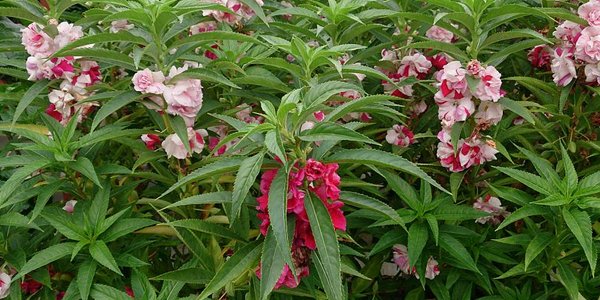Balsam Impatiens Balsamina price

Where to buy and sell Balsam Impatiens Balsamina, lowest (cheapest) and highest price.
check offers buy sell Balsam Impatiens BalsaminaToday price for Balsam Impatiens BalsaminaBalsam Impatiens Balsamina wholesale prices 2022
The Current commodity price of Balsam Impatiens Balsamina per kg, pound in the world in the global markets
impatiens (alegrias)
Price range: 1 - 1 EUR / 1 kg | Market: Mercados de Abastecimientos de Barcelona SA | Date: 2022-07-24
impatiens (alegrias)
Price range: 1 - 1 EUR / 1 kg | Market: Mercados de Abastecimientos de Barcelona SA | Date: 2022-07-17
impatiens (alegrias)
Price range: 1 - 1 EUR / 1 kg | Market: Mercados de Abastecimientos de Barcelona SA | Date: 2022-07-10
impatiens (alegrias)
Price range: 1 - 1 EUR / 1 kg | Market: Mercados de Abastecimientos de Barcelona SA | Date: 2022-07-03
impatiens (alegrias)
Price range: 1 - 1 EUR / 1 kg | Market: Mercados de Abastecimientos de Barcelona SA | Date: 2022-06-26
impatiens (alegrias)
Price range: 1 - 1 EUR / 1 kg | Market: Mercados de Abastecimientos de Barcelona SA | Date: 2022-06-19
impatiens (alegrias)
Price range: 1 - 1 EUR / 1 kg | Market: Mercados de Abastecimientos de Barcelona SA | Date: 2022-06-12
impatiens (alegrias)
Price range: 1 - 1 EUR / 1 kg | Market: Mercados de Abastecimientos de Barcelona SA | Date: 2022-06-05
impatiens (alegrias)
Price range: 1 - 1 EUR / 1 kg | Market: Mercados de Abastecimientos de Barcelona SA | Date: 2022-05-29
impatiens (alegrias)
Price range: 1 - 1 EUR / 1 kg | Market: Mercados de Abastecimientos de Barcelona SA | Date: 2022-05-22
impatiens (alegrias)
Price range: 1 - 1 EUR / 1 kg | Market: Mercados de Abastecimientos de Barcelona SA | Date: 2022-05-15
impatiens (alegrias)
Price range: 1 - 1 EUR / 1 kg | Market: Mercados de Abastecimientos de Barcelona SA | Date: 2022-05-08
impatiens (alegrias)
Price range: 1 - 1 EUR / 1 kg | Market: Mercados de Abastecimientos de Barcelona SA | Date: 2022-05-01
Balsam Impatiens Balsamina
Balsam (Impatiens balsamina) is a plant that belongs to the impatiens family. It is native to tropical regions of Asia and Africa. The plant grows up to 1 meter in height and has large, oval-shaped leaves. The flowers are usually white or pink and have five petals. The balsam plant is grown for its flowers, which are used in bouquets and floral arrangements. The plant is also grown as a houseplant. It is native to tropical Africa and Asia, and has been introduced to other parts of the world, including North America. The plant grows to a height of 30-60 cm (12-24 in), and has oval-shaped leaves and pink, white, or purple flowers. Balsam is grown as an ornamental plant and is also used in traditional medicine. The plant has a thin stem and small, oval-shaped leaves. The flowers are usually pink or white and have five petals. The plant blooms from June to September. After the plant blooms and produces seeds, it dies. The plant grows best in humid climates and does not tolerate frost. Balsam is a popular ornamental plant. It is often grown in gardens and used as a houseplant. The plant is easy to care for and does not require much maintenance. The balsam plant is native to tropical regions of Asia. It was introduced to Europe in the 17th century and has since been naturalized in many parts of the world. The plant grows to a height of 30-60 cm (12-24 in). The leaves are dark green, ovate-elliptic to lanceolate, and 6-12 cm (2.4-4.7 in) long and 3-6 cm (1.2-2.4 in) wide. The flowers have five petals, are 2.5-3.5 cm (1-1.4 in) long, and come in a variety of colors including white, pink, red, purple, and yellow. The flowers are borne in clusters at the end of the stems. To produce balsam, the plant needs well-drained soil that is high in organic matter. The soil should be kept moist, but not soggy. Balsam does best in full sun but can tolerate partial shade. The plant can be started from seed, or purchased as a young plant from a nursery. Once it is established, balsam will bloom from late spring to early fall. To encourage more blooming, deadhead spent flowers regularly. Balsam can also be propagated by taking stem cuttings in late summer.Global balsam (impatiens balsamina) production
The species has a long history of cultivation and use in Traditional Chinese Medicine. In China, the plant is known as zǐlán (紫兰) or bái lán (白兰). It is used in the traditional Chinese medicine system for a variety of conditions. Global production of impatiens balsamina is estimated to be about 1,000 metric tons per year. The majority of production takes place in China, where the plant is native. Other major producers include India, Bangladesh, and Nepal. Impatiens balsamina is grown for a variety of purposes, including as an ornamental plant, for use in traditional medicine, and for its edible leaves. The leaves are used as a leaf vegetable in many parts of Asia. They can be cooked and eaten like spinach or used in salads. The plant is also grown as a source of cut flowers. The flowers are used in bouquets and floral arrangements. They are also sometimes strung together to make garlands. In traditional Chinese medicine, impatiens balsamina is used to treat a variety of conditions, including sore throat, cough, and fever. The plant is also used as a diuretic and to promote the healing of wounds.Download our new
Husfarm App
Stay up to date with the current prieces of agricultural products all over the world.
Do you want to sell agricultural products?
Are you an Agricultural processor looking for high-quality products to buy?
Post an ad for FREE!
